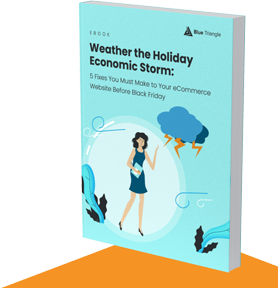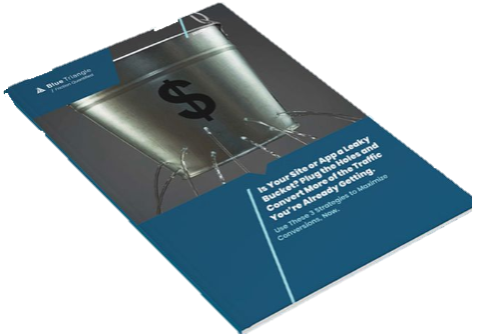At Lowe’s, Mike Shady explained how the company built customer loyalty, rung by rung. Each rung represents a step toward loyalty.
But as Mike, who led Lowe’s online business, cautioned in this episode of The Frictionless Experience, every step up also carries more risk.
"You're climbing rung by rung," Mike said. "You get something that goes bad, do you ever fall one rung down? No. You hit the ground half the time."
It is a simple image that captures the fragility of digital loyalty. Every smooth step builds trust. One misstep sends you crashing down.
When Nick Paladino and I spoke with Mike, who led Lowe's online business before becoming Chief Digital Officer at Staples, he unpacked what it really takes to keep customers engaged and how to spot friction before it causes them to fall off.
Rung 1: Be Your Own Customer
For Mike, the first rung of loyalty starts with empathy, not analytics.
"Shop yourself," he said. "Try and buy fencing online, try and buy 20 by 25 carpet online, get that stuff delivered, get a refrigerator delivered to your house. Test these things and try it out."
The best way to identify friction is to experience it firsthand, not just read about it in dashboards or customer surveys.
At Lowe's, Mike and his team made that a habit.
"We had a program that we gave people a credit account and allowed them to go out and purchase things," he explained. "They shopped the category. They optimized the category. One piece of that was buying things within the category and having that stuff shipped to your house, and going through the process of figuring out how it works."
That process often revealed friction hidden between the digital and physical worlds.
Mike said:
That is the first rung: feel the friction yourself before your customers do.
Rung 2: Segment the Journey
Not every customer climbs the same ladder. A contractor and a weekend DIYer shop in entirely different ways.
"There are unique pro experiences," Mike said. "They're shopping very differently because they're so in tune with the product. And you've got to tweak the website to make sure that they can get in and out quickly. All they want to do is make that experience as fast as possible because they're making money when they're on the job site."
The Pro needs efficiency and reorder tools. The DIY customer might need inspiration or education. Trying to serve both with the same design creates friction for everyone.
"Both Depot and Lowe's have Pro versions of their websites," he said. "It brings a lot of other elements in that might not be necessary for a common DIY shopper."
Segmenting the journey protects loyalty by removing the unnecessary and focusing on what each group actually values.
Rung 3: Hide the Complexity
The higher customers climb, the less friction they will tolerate and the less they care how hard it is to remove. Mike explained:
Smooth digital experiences often mask incredible complexity underneath. That is by design.
"However you can make that experience easier for a customer, the better off you're going to be as a company," he said.
But hiding complexity requires vigilance. Systems need to detect issues before customers become aware of them.
Mike warned:
Which leads to the next rung.
Rung 4: Build Systems That Catch Problems Fast
Mike shared a story that every e-commerce leader can relate to: a site release that was intended to improve the experience but inadvertently broke checkout.
"Everybody was excited for this," he said. "We thought it was absolutely gonna be great… but didn't realize the release that was happening on a product page was also touching the fulfillment leg. The experience upfront looked great. I could add this thing to cart, but when I got to cart, I couldn't check out."
It is every online team's nightmare.
Perfection is not the goal. Preparedness is.
"You have always got to be ready for when the thing goes bump in the night," Mike said. "Because it's going to happen."
The ability to catch and recover fast can be the difference between a minor blip and a major fall down the loyalty ladder.
Rung 5: Deliver Every Time
Few experiences test loyalty more than appliance delivery. It is high-value, high-stakes, and often high-friction.
"If I'm getting a new refrigerator, it probably means my old refrigerator doesn't work," Mike said. "I'm living out of a cooler or my stove doesn't work. I can't cook. With those types of things, you are invested in the purchase decision that you've made with that company. And if that company lets you down, the pain you feel with that delivery not working, it falls back on the experience to the brand in general."
That is the loyalty ladder in real life. The higher the customer climbs, the harder they fall.
"It's either you're a hero or a zero in some of those," Mike said. "How do we protect that experience and make sure they're getting what they need is super important."
For Pro customers, the impact can ripple even further.
"You're not just letting the person down," Nick noted. "You're letting the person down that is letting somebody else down."
"Yes," Mike agreed. "What's that Pro going to say? I didn't get my stuff, and it came from X company."
Delivering consistently is not just logistics. It is loyalty insurance.
The Hidden Rung: Stay Humble
When I asked Mike what companies often get wrong about friction, his answer summed it up perfectly.
"Companies that think they know best are the ones that very, very frequently will trip over themselves and develop a customer experience that's not tuned the way that they need it," he said. "You don't know everything. You've got to have that constant customer-first mentality."
Nick added a quote from Socrates that fits the modern digital world better than ever.
"The only thing I know is that I know nothing."
Mike smiled. "Know the customer. What does the customer want and be able to use it."
That humility, combined with curiosity, might be the real top rung of loyalty.
Climbing Higher, Falling Harder
As customers move up the loyalty ladder from first-time buyers to advocates, each interaction either reinforces their trust or weakens it. Mike called it stickiness.
"It takes so much time to be able to create stickiness with a customer," he said. "You spend all this time and effort to market, and then they're on the site and they say they have a great experience. The chance of them coming back is high, and the chance of them spending more is higher."
But the more loyal the customer, the more it hurts when something goes wrong.
"Those are the groups that you want to hang onto because they're the ones that are putting in a ton of revenue and faith into your brand," he said. "And letting them down is definitely tough to digest."
That is the paradox of loyalty: every step up brings more reward and more risk.
Final Thought: Frictionless Means Prepared
Mike closed with advice every digital leader should pin to their wall.
"Anytime you ever get stuck, go back and look at what your customers are asking for," he said. "And you've got to be ready for anything when you're looking at multi-billion dollar websites… The secret sauce behind making sure that customer experience just seems incredibly smooth is being prepared."
Frictionless does not mean effortless. It means intentional. It means ready.
So climb carefully, test constantly, and never stop being your own customer.
Listen to the full episode of The Frictionless Experience with Mike Shady to hear his real-world stories from Lowe's and Home Depot, including the appliance delivery disaster that perfectly illustrates why end-to-end experience matters.

During the holiday rush, every shopper matters
Optimize the customer journey before the eCommerce event of the year.

.jpg)





